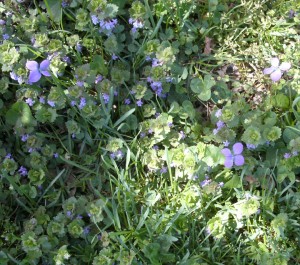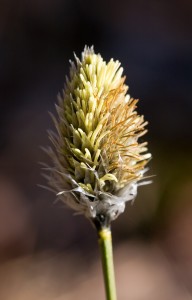by Deborah Bier
“If one advances confidently in the direction of one’s dreams, and endeavors to live the life which one has imagined, one will meet with a success unexpected in common hours.” Henry Thoreau
On a sunny Saturday in April, at Thoreau Farm, we advanced confidently toward the garden with a new fence in mind, and we were successful beyond our wildest expectations! We built our fence thoughtfully, using as many recycled materials as possible, leaving a small carbon footprint; we wanted our fence to be natural and aesthetically pleasing. And we did not want to use any toxic chemicals.
At Thoreau Farm, we have been fortunate to have very little animal predation other than some small rodents (chipmunks, mice, squirrels). So our fence was mostly to keep young human animals out of the garden where their curious feet might bring them when their parents looked away.
We live a little more than a mile from Thoreau Farm, and last summer my husband, Rich, had felled some trees in our yard – a white oak, a spruce, and some self-sowed crab apples. We also had a number of large sycamore branches downed in storms. So, we had a huge pile of brush, and, instead of an enormous spring burn (Rich’s preference), I realized we could find most of our fence materials in this lovely wood.
Happily, we were able to cut all our posts and vertical fence members from this backyard wood, and as we did this, we grouped each type of wood (or at least tried to) to a single length of fence, our thinking being that each type of wood would rot at a different speed. When replacement time arrived, we would then replace an entire section of fence at the same time, rather than single pieces here and there.
To hold together these vertical slats, we used modern milled pine strapping. We knew that, at first, this fresh wood would stick out visibly, but that it would also age pleasantly in about a year, especially if we kept it outdoors over the winter. Though this aging would shorten the lifespan of the fence, it would be more aesthetically pleasing when seen in relation to the house’s circa-1878 exterior.
We built the fence over two weekends, using enthusiastic volunteers from our kitchen garden committee, their spouses, and other friends of Thoreau Farm. Our fence-building was like a barn-raising, only much, much more manageable. Still, the effect of neighbors working together with our hands to create something useful and beautiful was a pleasure and delight.
Yes, we used modern fasteners and tools — some human powered, others electric. But one must recall that our kitchen garden is not an historic re-enactment, but rather a working experiment in combining heirloom seeds with cutting edge organic and bio-intensive gardening methods.
As the fence went up that fresh wood just bugged me: it was so raw, and yet I hated to reduce the lifespan of the fence just to weather it. And then I recalled that I knew something about how to make new wood appear old, without using toxic chemicals or esoteric ingredients. I had learned of this process on Pinterest, of all places. Using this info, I created a brown stain by soaking steel wool in white vinegar for 5 days. The resulting solution was surprisingly light, at first, showing as just slightly more brown than the color of the wood. Within 30 seconds, however, it was considerably darker. After another minute, it was very dark. We could not believe how amazingly well it worked — we kept looking and exclaiming about it!
Afterward, we agreed that it was actually a bit comical how surprised we were, because it’s likely a process folks knew and took for granted back in Thoreau’s day, part of the every-day “how to do things” knowledge acquired by people here for centuries. Now, this knowledge had become rare again, exotic even.
Then it struck us: why should we all be so surprised? Don’t we recount on the Thoreau Farmhouse tour how the backs of houses used to be painted red using pigments made with inexpensive iron oxide? Which is just another way of saying “rust”! I don’t know why, but it took us all this time to put that together. Now, I recall that I read somewhere they had used iron nails instead of steel wool for stain, but hadn’t understood it until now. But what a great use for too bent or broken nails.
I also learned from Pinterest that you can use pennies and vinegar to create a blue stain. According to this article, you have to find pennies with a 1962 or earlier date, since there is so little copper in them now.
We can’t wait to try it!


